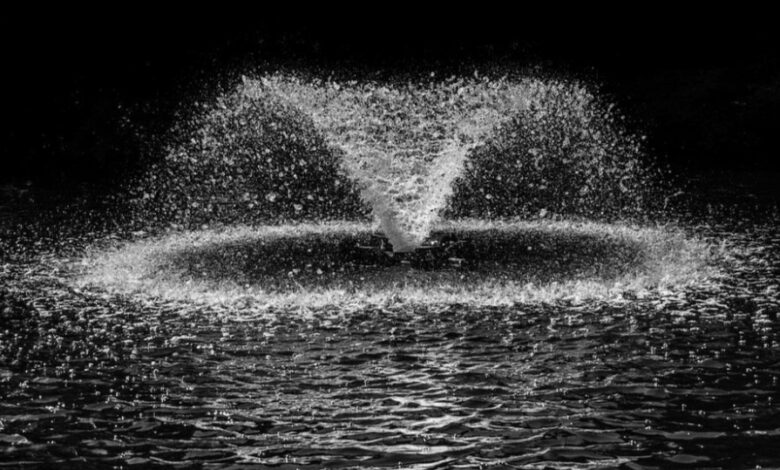How To Take Care Of Your Freshly-Installed Water Feature

Installing a water feature is a wonderful way to add beauty and tranquility to your garden or your interior. Not only will it provide a lovely focal point, but it can also help to cool the air on hot days. If you have just installed a water feature in your home or garden, there are some things you need to do to take care of it.
1) Check the water level every day
The water should be at least 2 inches below the top of the basin. If it gets too low, the pump will overheat and could break. For example, if you have a 50-gallon basin, fill it up with at least 48 gallons of water. Plus, you don’t want the water to evaporate too quickly, so top it off as needed.
Additionally, check the water level in the reservoir (if your water feature has one) every week or so. This should be done more frequently if the water feature is located in a sunny spot.
Keep in mind that evaporation will be higher in the summer months, so you may need to top off your water feature more often. Similarly, if you live in a hot climate, you may need to top off your water feature more often than someone who lives in a cooler climate. As for colder months, you may need to check for ice buildup and make sure the pump doesn’t freeze.
2) In-house water features
When buying an in-house water feature, you should consider how much space is available, what type of pump is required, what kind of power source is needed, and if you want the feature to be visible or hidden. There is a wide range of indoor water fountains that can be found online and in stores. Be sure to do your research to find the best one for your needs.
If you have an in-house water feature, it is important to keep the area around it clean. This means dusting and vacuuming on a regular basis. It is also a good idea to wipe down the fountain with a damp cloth every week or so.
Plus, if you have an in-house water feature, you will need to change the water more frequently than an outdoor one. This is because the water will get dirty more quickly due to dust and other airborne particles. Depending on the size of your fountain, you should change the water every 1-2 weeks.
3) Outdoor water features
There are many different types of outdoor water features, from simple birdbaths to large pond fountains. When choosing an outdoor water feature, you need to consider the climate, the size of your yard, and your budget.
If you live in a cold climate, you need to make sure your water feature is properly winterized. This means draining the water, removing any debris, and covering the fountain.
If you live in a hot climate, you need to make sure your water feature is in a shady spot. This will help to keep the water from evaporating too quickly.
Additionally, you need to be careful of leaves and other debris falling into the water. This can dirty the water and clog the pump. To prevent this, you should clean out your water feature on a regular basis.
4) Maintaining your water feature
No matter what type of water feature you have, there are a few things you need to do to maintain it. First, you need to make sure the pump is working properly. This means cleaning it on a regular basis and checking for any leaks.
Second, you should clean the basin of your water feature on a regular basis. This will prevent dirt and debris from building up and clogging the pump.
Third, you need to check the water level on a regular basis and top it off as needed. This will prevent the pump from overheating and breaking.
Finally, you should inspect your water feature for any cracks or leaks on a regular basis. If you find any, you will need to repair them as soon as possible to prevent further damage.
5) Steps you should take if your water feature stops working
If your water feature stops working properly, there are a few steps you can take to try and fix the issue. First, check to make sure that the pump is properly plugged in and that the electrical outlet is working. Next, check the water level in the reservoir and make sure it is full. If the water level is low, it may need to be refilled. Finally, check the plumbing to make sure there are no leaks or clogs. If you still cannot get your water feature to work properly, you may need to call a plumber.
A plumber will be able to diagnose the problem and make the necessary repairs. They may also be able to advise you on how to properly maintain your water feature so that it works properly for years to come.
6) Additional tips and hacks
There are a few additional tips and hacks you can use to keep your water feature in top shape. For example, you can add a little bleach to the water to help kill any bacteria that may be present. Additionally, you can use distilled water instead of tap water to help prevent mineral build-up.
Finally, you should always make sure to read the manufacturer’s instructions before using any cleaners or chemicals on your water feature. This will help to prevent damage and extend the life of your fountain. Similarly, you should always consult a professional if you are unsure about how to properly maintain your water feature.
Maintaining your water feature is an important part of keeping it in good condition. By following these simple steps, you can keep your fountain running smoothly for years to come. If you ever have any problems with your water feature, be sure to consult a professional. They will be able to diagnose the problem and make the necessary repairs.



